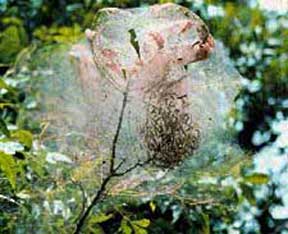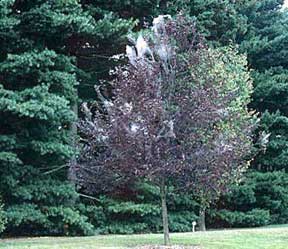Fall webworms beginning to appear
Editor’s note: This article is from the archives of the MSU Crop Advisory Team Alerts. Check the label of any pesticide referenced to ensure your use is included.
In the last two to three years, webworms have been abundant throughout southern Michigan in late summer. Silky tents made by webworm caterpillars are beginning to appear now on the branch tips of walnut, hickory, ash, elm, crabapples and other types of trees. The small yellowish-gray webworm caterpillars hide in the webs during the day. Some trees have actually been defoliated from having a tent on nearly every branch. But in most cases, each tree has three or four tents. They look bad, but cause little harm. Tree health is not affected until more than 50 percent of the foliage is consumed, and even then, the trees usually come back just fine the following spring. Pruning-out infested branches is the best strategy if you can reach them. Spraying the foliage around tents with B.t., Sevin, Orthene, or a pyrethroid insecticide will prevent further feeding injury, but the old tent will remain visible for several months. We have many natural parasites and pathogens of fall webworm that will eventually bring infestations under control. Outbreaks usually last two or three years.

Fall webworm silky tent.

Tree covered in fall webworm tents.
Dr. Smitley's work is funded in part by MSU's AgBioResearch.



 Print
Print Email
Email

